Welcome to the February -March 2024 edition of The Despatch, the Military Communications and Electronics Museum Newsletter.
80 Years Ago! The Invasion of the Italian Mainland
The German Winter Line effectively held the Canadians in a static position during the winter of 1944. Although it was a "static front" there was never any rest for Signals personnel. The war was still on, communication still had to be effective even though the Canadians troops were being shelled and communication infrastructure regularly had to be replaced. Static positions, however briefly held, we're exposed to greater shelling with the attendant line troubles. The Canadians were so close to the German lines that they sometimes ended up using the same wireless frequency for communications and could often hear a German voice command them in English to "get off the air". The Signal Office was so busy that despatch riders always found their satchel's well-filled while they drove through roads pinpointed by German guns.
While the winter weeks dragged by in the mud at Ortona, other Canadian formations were arriving from Britain and moving up to join the 1st Division. The 1st Canadian Core Signals set up their first Signal Office at the beginning of February in Ortona, after having staged in Sicily and being moved up by rail. the newly arrived1st Canadian Corps Signals spent the month in the rain and snow becoming acclimatized to being shelled by the Germans. It gave the newly arrived signals units an opportunity to become accustomed to combat in Italy. In March, all Canadian units were withdrawn from the Ortona sector in preparation for the spring offensive.
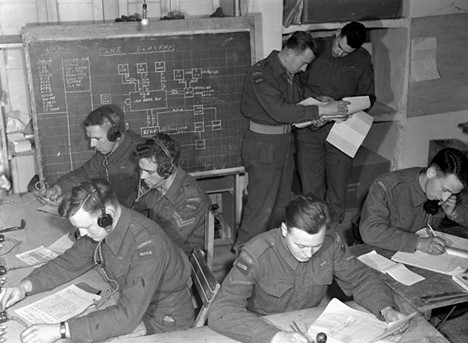
Signals Centre of the 5th Canadian Armoured Division near Castelnuovo, Italy, 17 March 1944
Liutenant Governor Lincoln Alexander
Did you know that Lieutenant-Governor of Ontario, Lincoln Alexander, joined the Royal Canadian Air Force in 1942 after the colour line had been lifted? He enlisted in the Royal Canadian Air Force on 20 October 1942 as he felt he looked best in that uniform. Mr. Alexander had poor eyesight and was not able to be deployed overseas. He trained as a wireless operator in places such as Guelph, Ontario, and Lachine, Quebec. He then served at Number Seven Air Observer School, in Portage La Prairie, Manitoba, which was a British Commonwealth Air Training Plan (BCATP) establishment. In 1945, Cpl. Lincoln Alexander was refused service at a Vancouver bar because he was black and left the service. He was honorably discharged at the end of the war, with the rank of corporal.
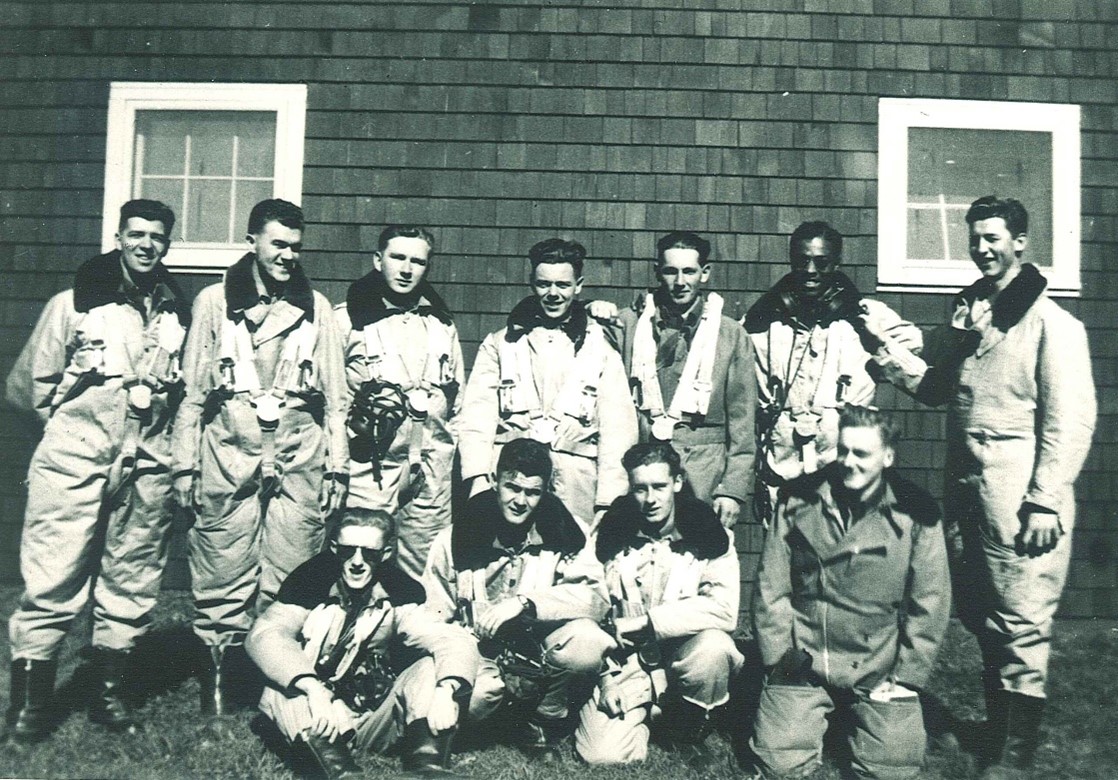
Members of a 1943 course at No. 7 Air Observer School in Manitoba. Front row, left to right: Don McCabe, Crawford Williams, Roy Bennett and Gordon Kerr. Back row, left to right: Joe Richards, George Dron, Charlie Hawgood, Doug Horan, Tony Usselman, Lincoln Alexander and Gerry Cormartin. PHOTO: Courtesy Royal Canadian Air Force Association
“The air force experience taught me the value of self-respect, discipline, and confidence, and those are elements that have served me well throughout my life. They apply to all areas, whether the air force, the law, or politics,” said Lincoln Alexander in his 2006 memoir Go to School, You’re a Little Black Boy.
After the war, Lincoln completed high school and used the money from his veteran’s grant to go to McMaster University where he completed a Bachelor of Arts in April 1949. He was accepted at Osgoode Hall Law School and graduated in 1953. After passing the Ontario Bar Association Mr. Alexander practised law and in 1965 was appointed Queen's Counsel. In 1968, he was elected to represent Hamilton West. In 1979, Prime Minister Joe Clark appointed him to cabinet as Minister of Labour. He was the first Black Canadian to serve as a Member of Parliament and as a Cabinet Minister. He was appointed the Lieutenant-Governor of Ontario in 1985, another first.
Lincoln Alexander continued to serve Canada, Ontario and his Hamilton community until his death in 2012. In recognition of his great work as a humanitarian, his birthday, January 21 is now recognized as “Lincoln Alexander Day,” across Canada.
For more information and a great video of Lincoln Alexander follow this link: https://www.archives.gov.on.ca/en/explore/online/alexander/index.aspx
International Women's Day - March 8, 2024
The International Women's Day 2024 campaign theme is 'Inspire Inclusion.' To inspire inclusion means to celebrate diversity and empowerment on International Women's Day 2024 and beyond. International Women's Day (IWD) is a global celebration of the social, economic, cultural, and political achievements of women. Each year, this day serves as a powerful reminder of the progress made towards gender equality and highlights the work that still needs to be done.
While matrilineal societies have existed around the globe for centuries, European society was based on the patrilineal Ancient Greeks where only adult male citizens who owned land were permitted to vote. For centuries women were unable to vote, own land, or inherit.
Mary Wollstonecraft published “A Vindication Of the Rights of Women” in 1792. It is one of the earliest treatises in the English language that advocated for gender equality. Well received at the time of publication, Wollstonecraft issued an early call for women’s suffrage: “I really think that women ought to have representatives, instead of being arbitrarily governed without having any direct share allowed them in the deliberations of government.”
The idea of women having access to education and the right to vote took hold. By 1848, Americans Elizabeth Cady Stanton and Lucretia Mott gathered a few hundred people at their nation’s first women’s rights convention in New York. Together they demanded civil, social, political and religious rights for women in a Declaration of Sentiments and Resolutions.
On March 8, 1908, 15000 women workers in the needle trades marched through New York City's Lower East Side to protest child labor, sweatshop working conditions, and demand women's suffrage. Beginning in 1911, International Women's Day was annually observed and in 1913, March 8 was chosen as the day to observe and celebrate women’s achievements.
The suffrage movement spread, and countries and colonies began to grant women the right to vote. WWI provided further impetuous to the women’s suffrage movement. Women's contribution to the war effort challenged the notion of women's physical and mental inferiority and made it more difficult to maintain that women were, both by constitution and temperament, unfit to vote. In Canada, women were allowed to vote in 1917.
By the time WWII broke out women were expected to support the war effort in multiple ways including becoming military personnel. The first two women’s services were created as auxiliaries to the air force and the army in 1941. Some 50,000 Canadian women eventually enlisted in the air force, army and navy. Many women were trained at Camp Barriefield (CFB Kingston) for roles in the Communication and Electronics Branch including coders and code breakers, visual signallers, teletype operators, switchboard and radio operators, plotters and telegraphists. They worked in British Columbia, Nova Scotia and Ontario, including at Camp X and were deployed overseas.
Today, women in the Communications and Electronics Branch hold every rank in the Canadian Armed Forces from Private to General.
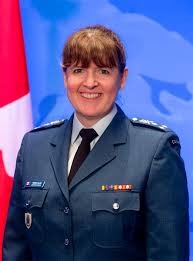
Lt. General Frances Allen Photo Credit: NATO
https://www.internationalwomensday.com/Activity/15586/The-history-of-IWD
10 Years! March 12, 2014 the end of the Afghanistan Mission
As a result of the September 11, 2001 terror attack on the United States, Canada joined the UN and NATO missions into Afghanistan to remove the Taliban from government. The Communications and Electronic Branch CAF members were there from the beginning until the end of the Canadian involvement in 2014.
More than 40,000 Canadian Armed Forces members served in the Afghanistan theatre of operations between 2001 and 2014. The CAF had the highest per-capita casualty rate among coalition members. 159 Canadian soldiers died on missions in theatre and another 22 died in non-combat circumstances.
The Communications and Electronics Branch lost three soldiers in Afghanistan:
Corporal Matthew McCully, 25-May-2007 2 Canadian Mechanized Brigade Group Headquarters and Signals Squadron
Master Corporal Anthony Klumpenhouwer, 18-Apr-2007 Canadian Special Operations Forces Command
Corporal Kenneth Chad O'Quinn, 3-March – 2009 2 Canadian Mechanized Brigade Group Headquarters and Signals Squadron
This is an excellent resource for those wishing to do further reading. https://www.canada.ca/en/army/services/line-sight/articles/2023/11/the-canadian-army-in-afghanistan.html
"Allward: Bring Stone to Life!"
In commemoration of the final capture of Vimy Ridge on 12 April 1917, the Military Communications and Electronics Museum (MCEM) is proud to announce "Allward: Bringing Stone to Life" !
Partnering with The Vimy Foundation, the Canadian War Museum, and Canadigm, the MCEM is delving into the enduring legacy of the Vimy Memorial and its sculptor, Walter Seymour Allward.
Discover the 15 plaster models that tell the story of Allward’s creative process in creating the Canadian National Vimy Memorial.
Through advanced 3D scanning technology, our collaboration has enabled us to digitally recreate the intricate maquettes that Allward dedicated years to sculpting, laying the groundwork for the iconic figures on the Vimy Memorial. Now, you can explore his works like never before.
Visit Allward.vimyfoundation.ca to explore the online site now, and make sure to visit the MCEM to see several of the maquettes!
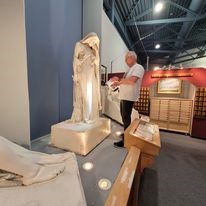
MCEM, 3 Jan 3024,Canadigm scanning Canada Bereft. Courtesy of Annette Gillis
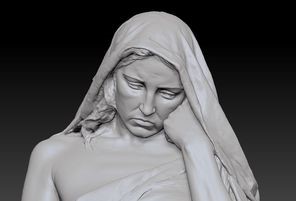
Resulting Canadigm scan
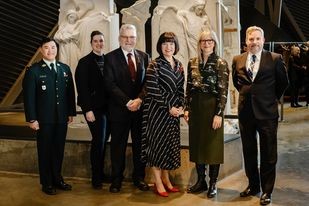
Major Heron Li (left) from CFSCE and Annette Gillis (2nd from left) from MCEM join representatives of the Vimy Foundation and the Canadian War Museum at the Allward launch event, 21 March 2024 at the Canadian War Museum in Ottawa. Courtesy of the Vimy Foundation/Steve Gerrard Photography.

LeBreton Gallery, Canadian War Museum. Courtesy of the Vimy Foundation/Steve Gerrard Photography.
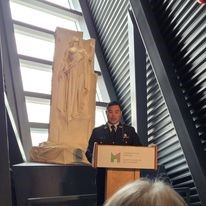
Major Heron Li speaking on MCEM participation at the Allward launch event, 21 March 2024 at the Canadian War Museum.
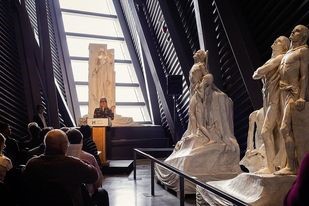
Carolyn Patton, Chair of the Vimy Foundation Board, speaking at the Allward launch event, 21 March 2024 at the Canadian War Museum. Courtesy of the Vimy Foundation/Steve Gerrard Photography.
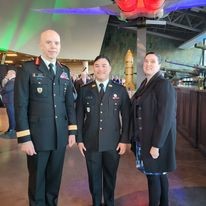
Gen. W.D. Eyre (Chief of Defence Staff), Major Heron Li (CFSCE) and Annette Gillis (MCEM) at the Allward launch event, 21 March 2024 at the Canadian War Museum. Courtesy of Annette Gillis.

